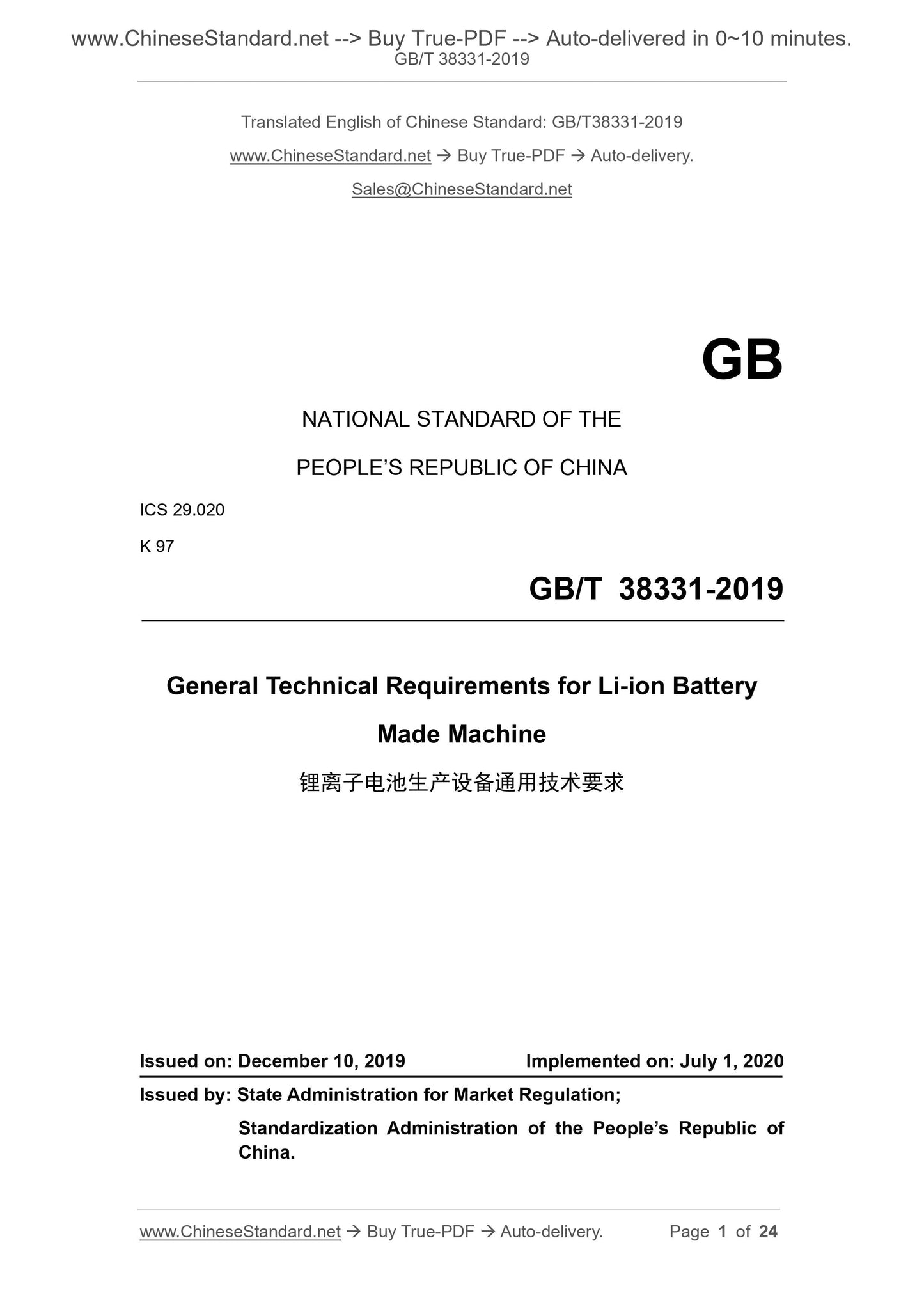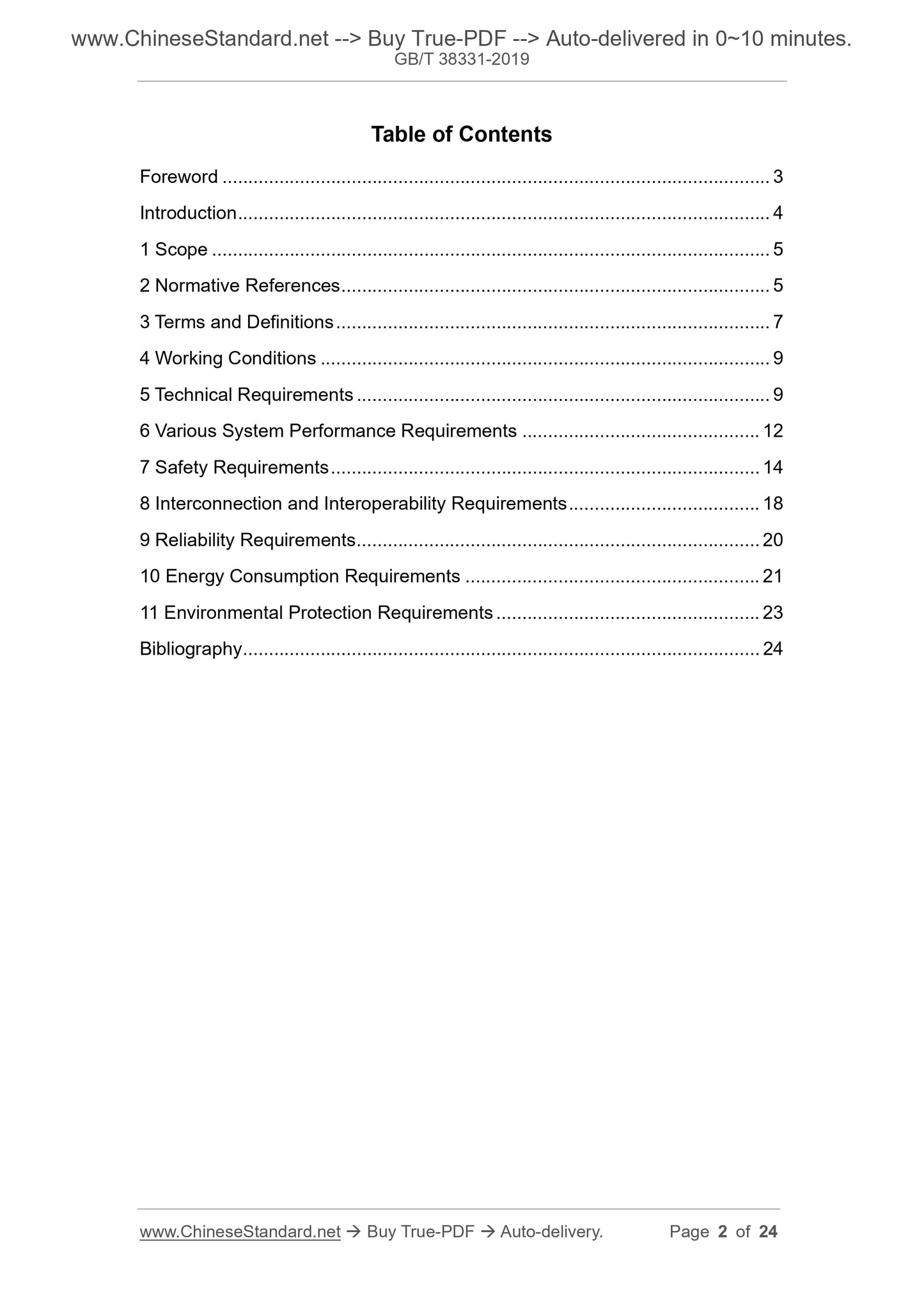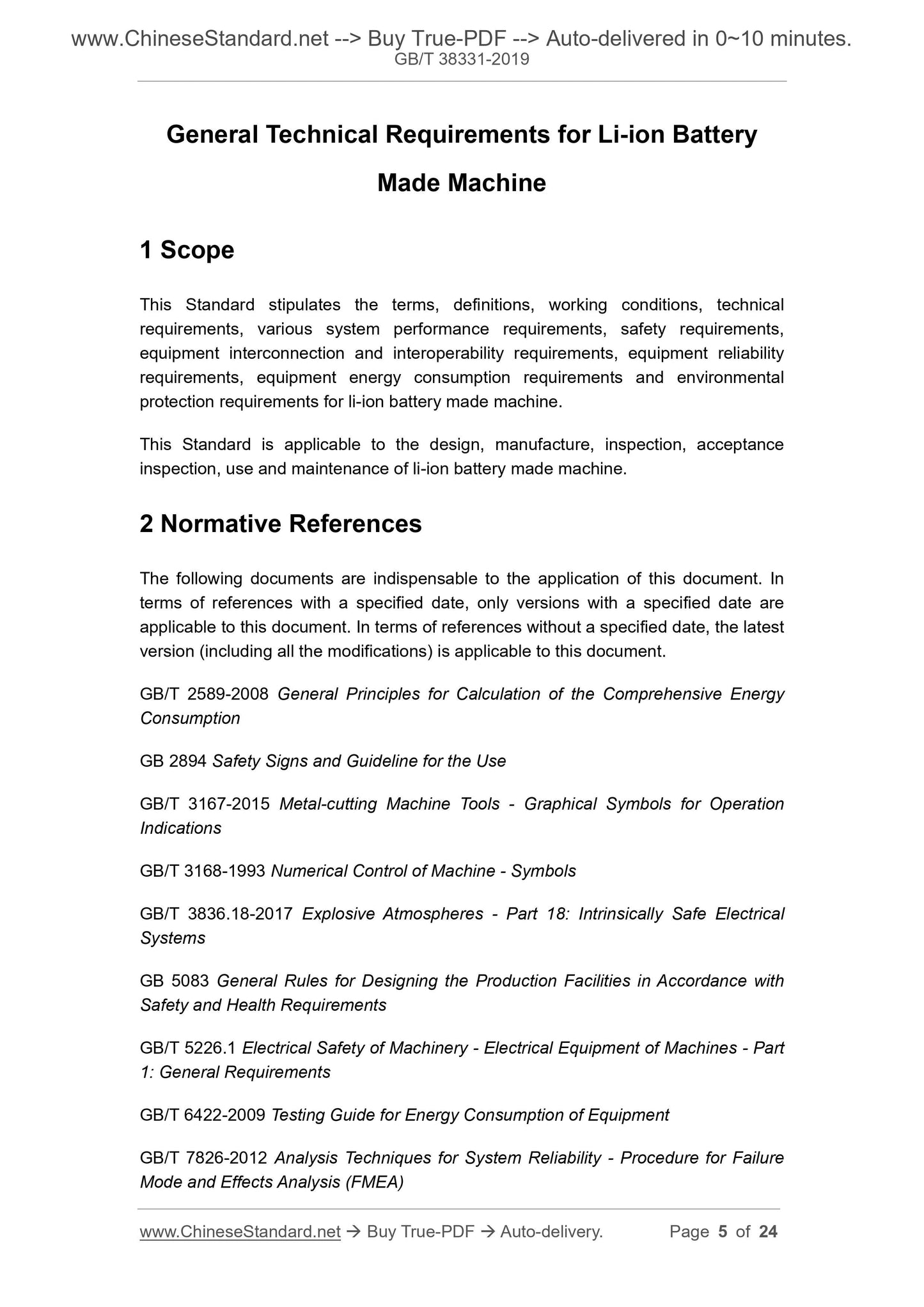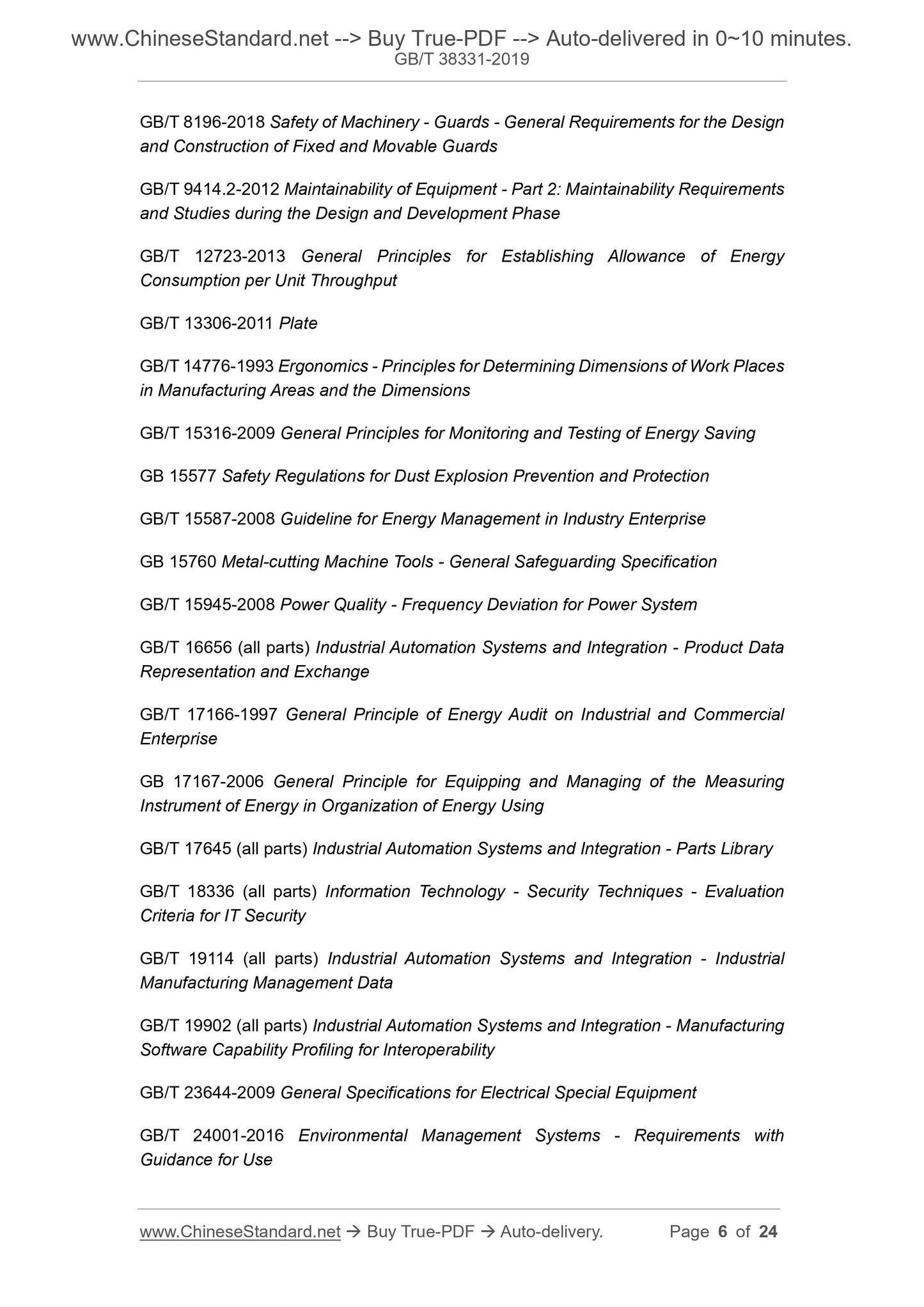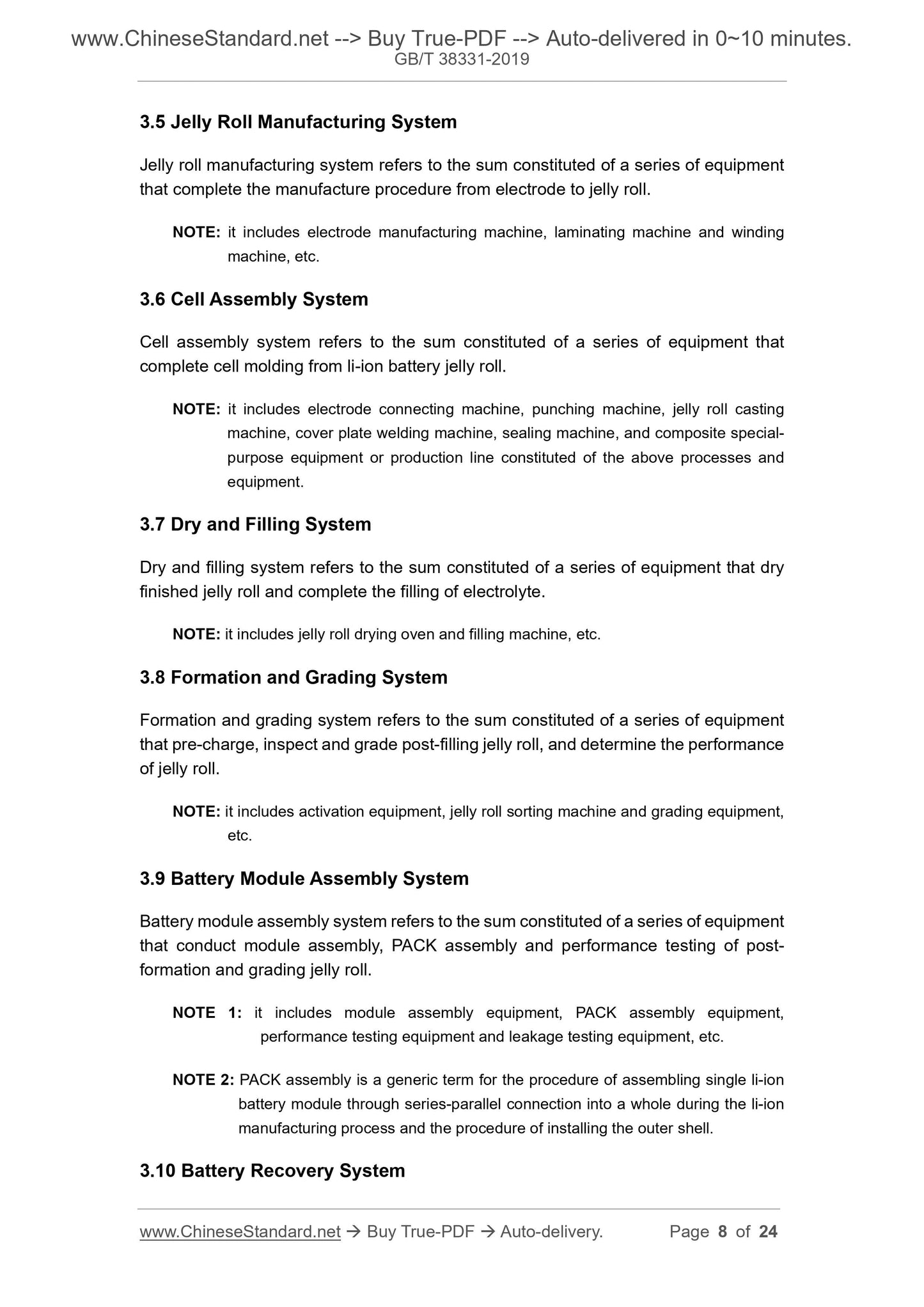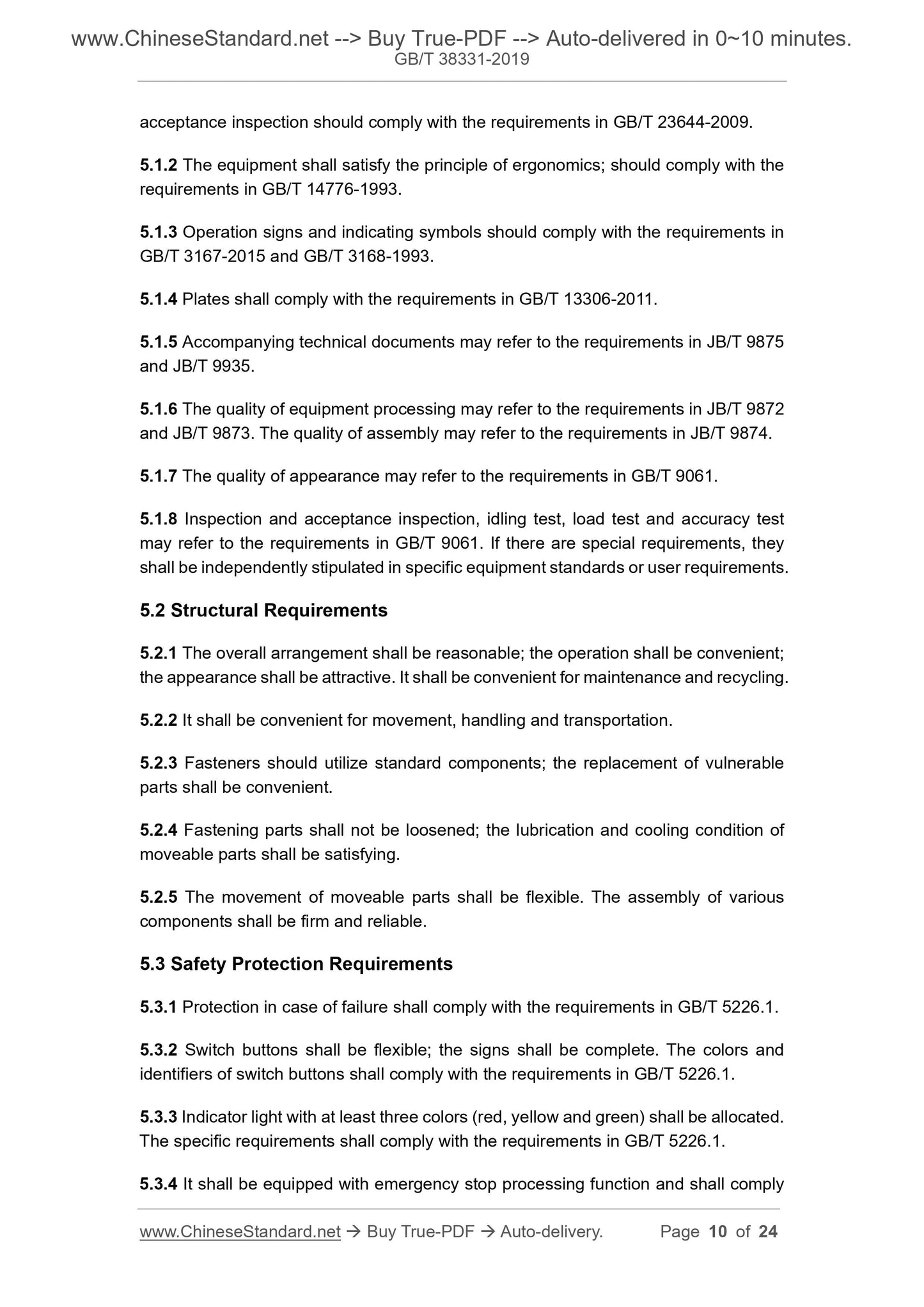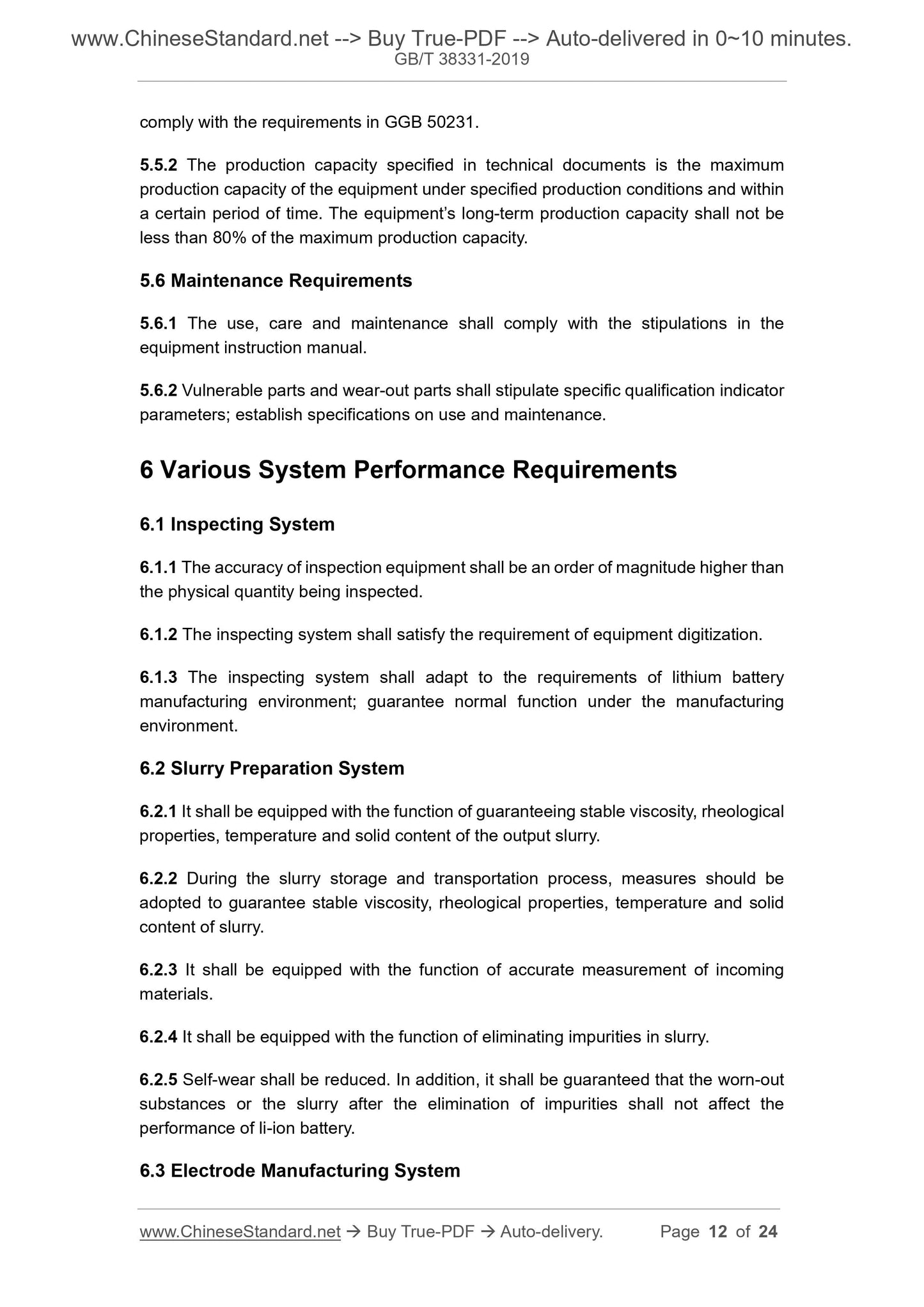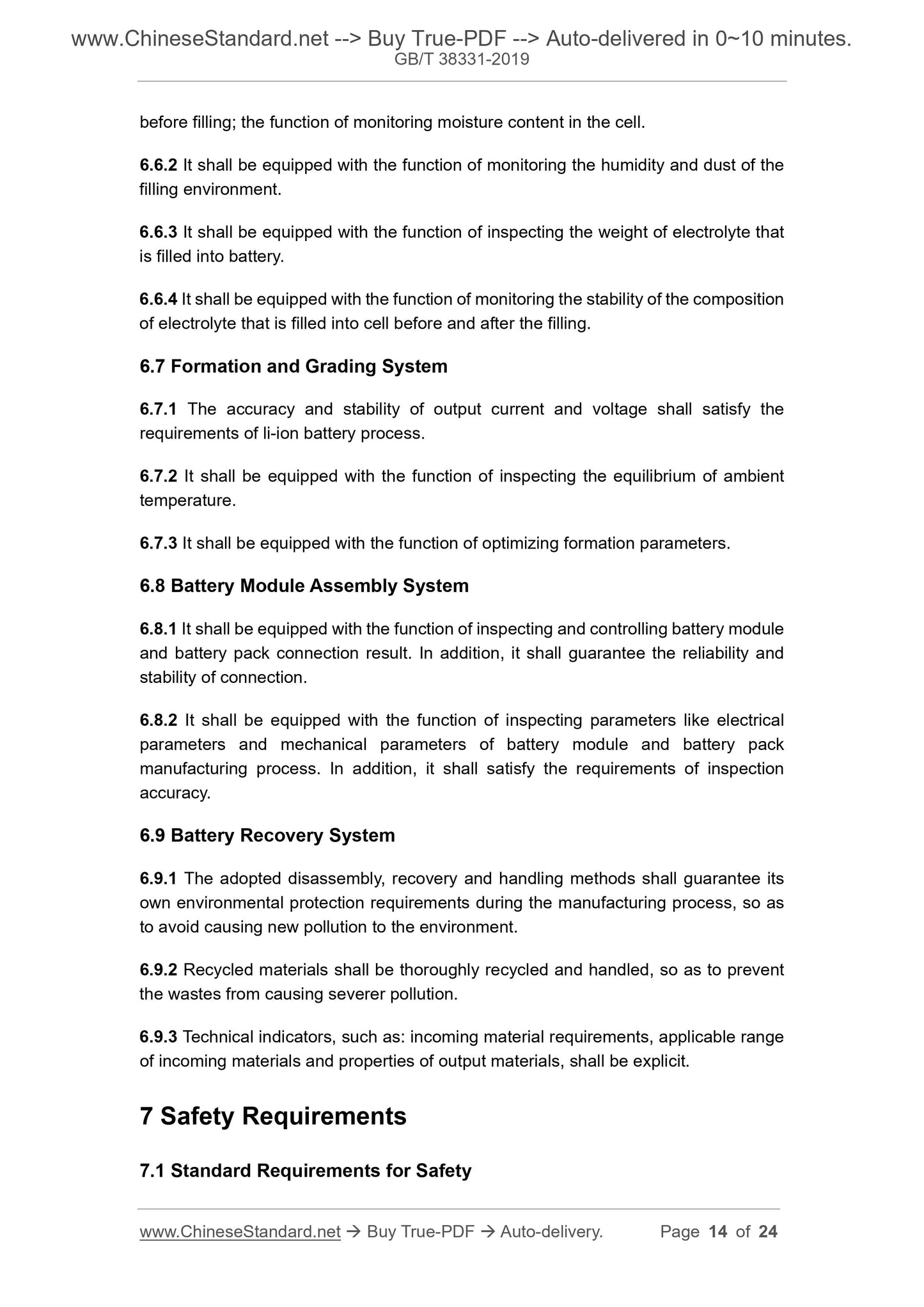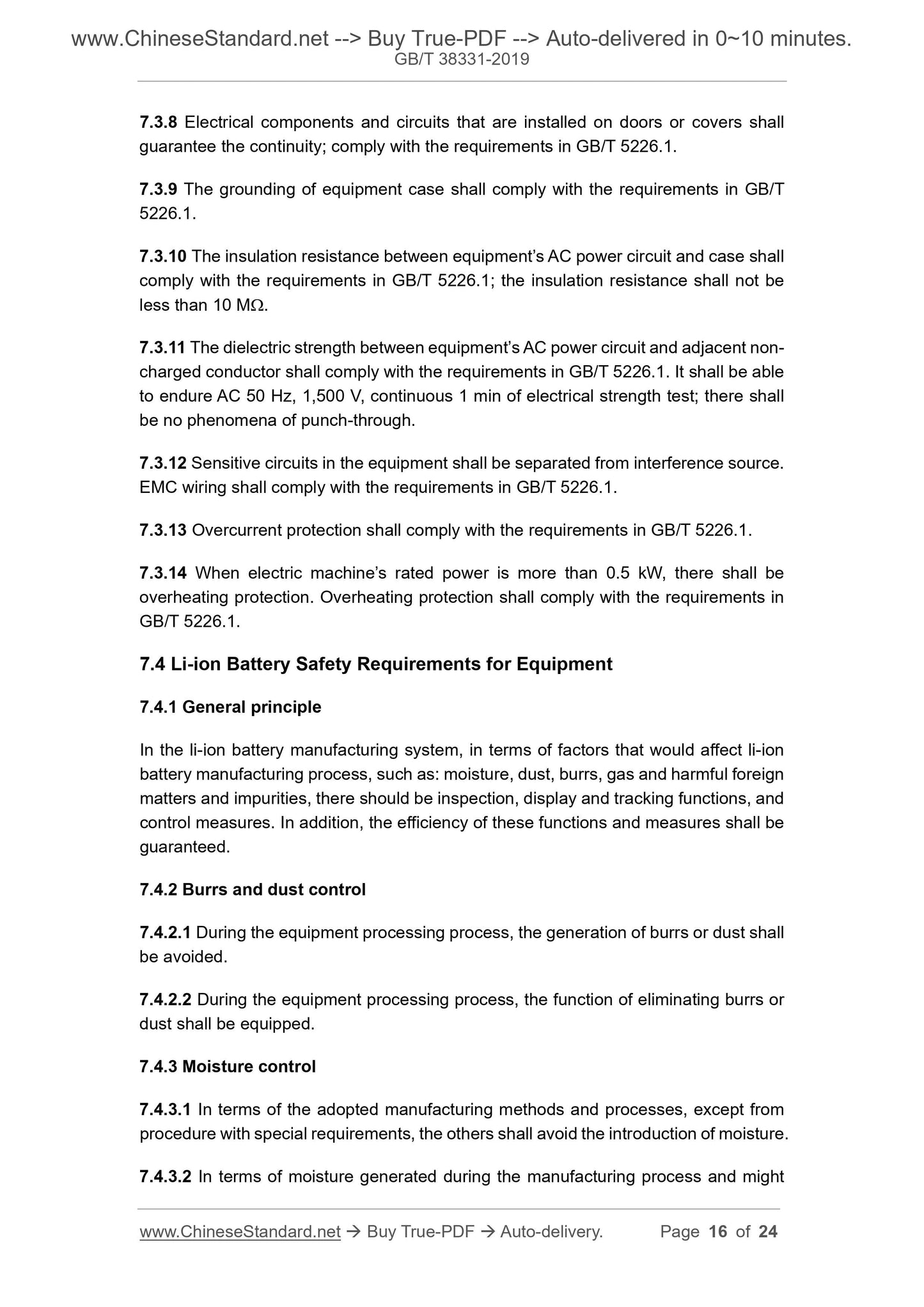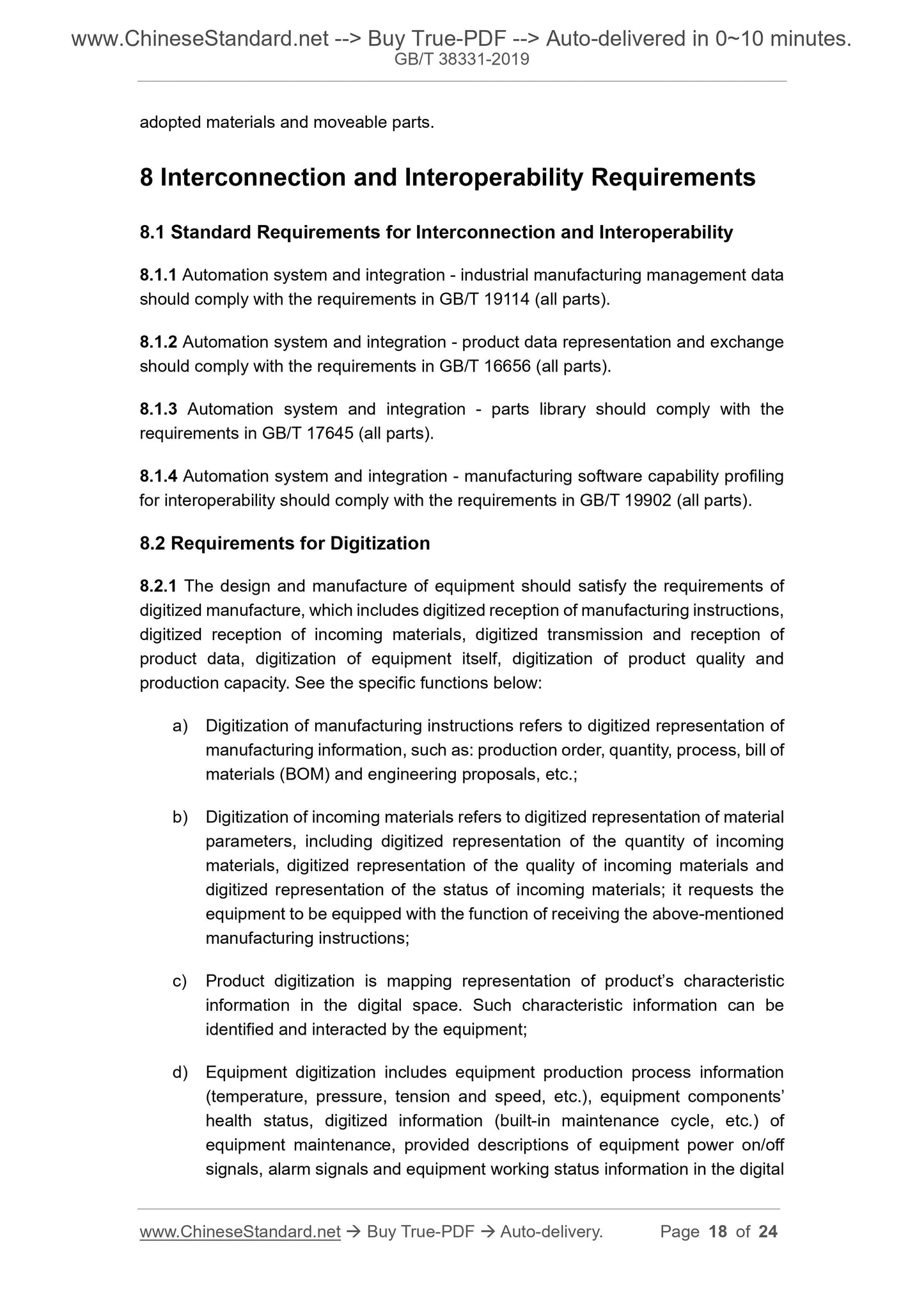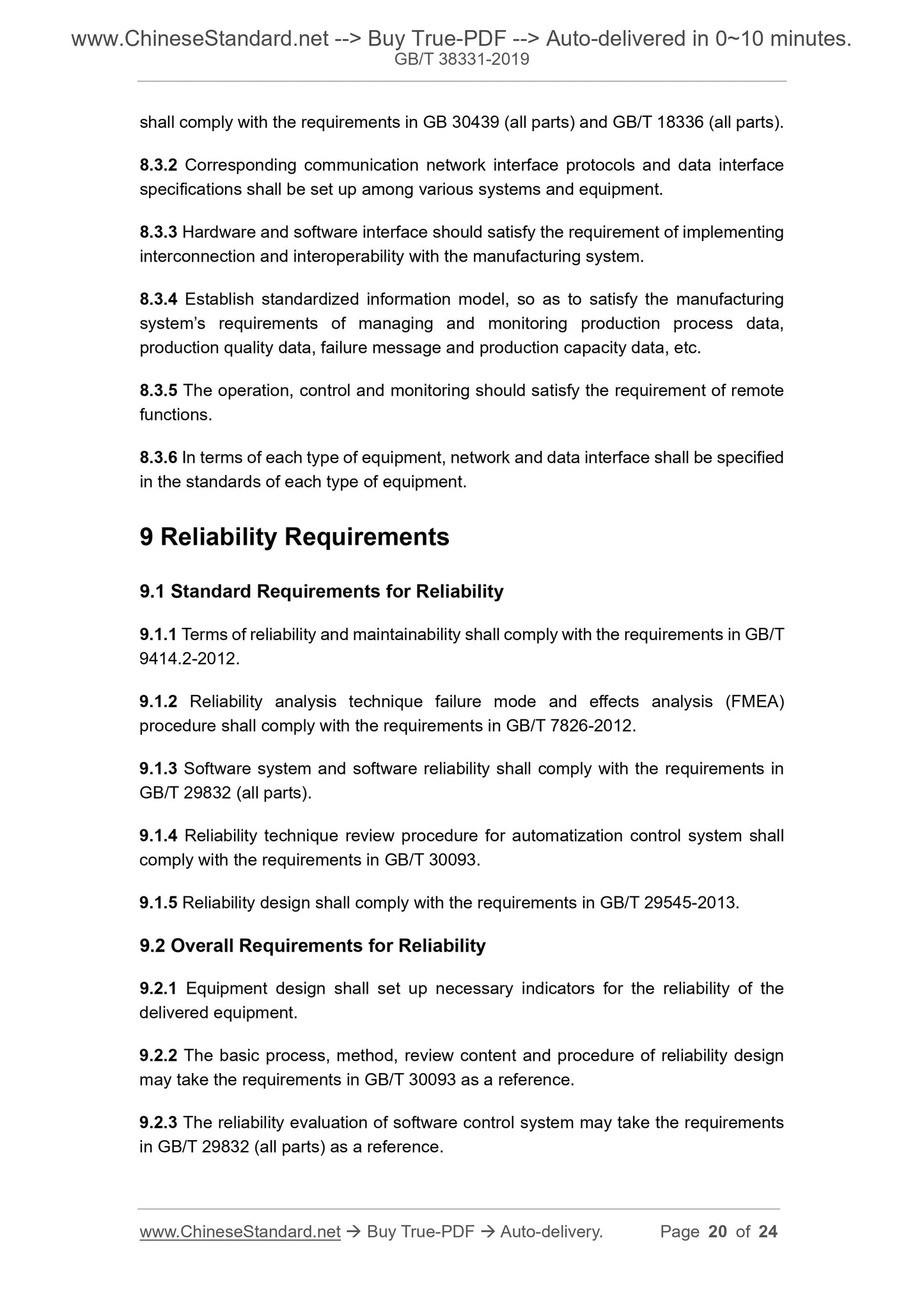1
/
of
11
www.ChineseStandard.us -- Field Test Asia Pte. Ltd.
GB/T 38331-2019 English PDF (GB/T38331-2019)
GB/T 38331-2019 English PDF (GB/T38331-2019)
Regular price
$190.00
Regular price
Sale price
$190.00
Unit price
/
per
Shipping calculated at checkout.
Couldn't load pickup availability
GB/T 38331-2019: General Technical Requirements for Li-ion Battery Made Machine
Delivery: 9 seconds. Download (and Email) true-PDF + Invoice.Get Quotation: Click GB/T 38331-2019 (Self-service in 1-minute)
Newer / historical versions: GB/T 38331-2019
Preview True-PDF
Scope
This Standard stipulates the terms, definitions, working conditions, technicalrequirements, various system performance requirements, safety requirements,
equipment interconnection and interoperability requirements, equipment reliability
requirements, equipment energy consumption requirements and environmental
protection requirements for li-ion battery made machine.
This Standard is applicable to the design, manufacture, inspection, acceptance
inspection, use and maintenance of li-ion battery made machine.
Basic Data
| Standard ID | GB/T 38331-2019 (GB/T38331-2019) |
| Description (Translated English) | General Technical Requirements for Li-ion Battery Made Machine |
| Sector / Industry | National Standard (Recommended) |
| Classification of Chinese Standard | K97 |
| Classification of International Standard | 29.020 |
| Word Count Estimation | 14,127 |
| Date of Issue | 2019-12-10 |
| Date of Implementation | 2020-07-01 |
| Issuing agency(ies) | State Administration for Market Regulation, China National Standardization Administration |
Share
